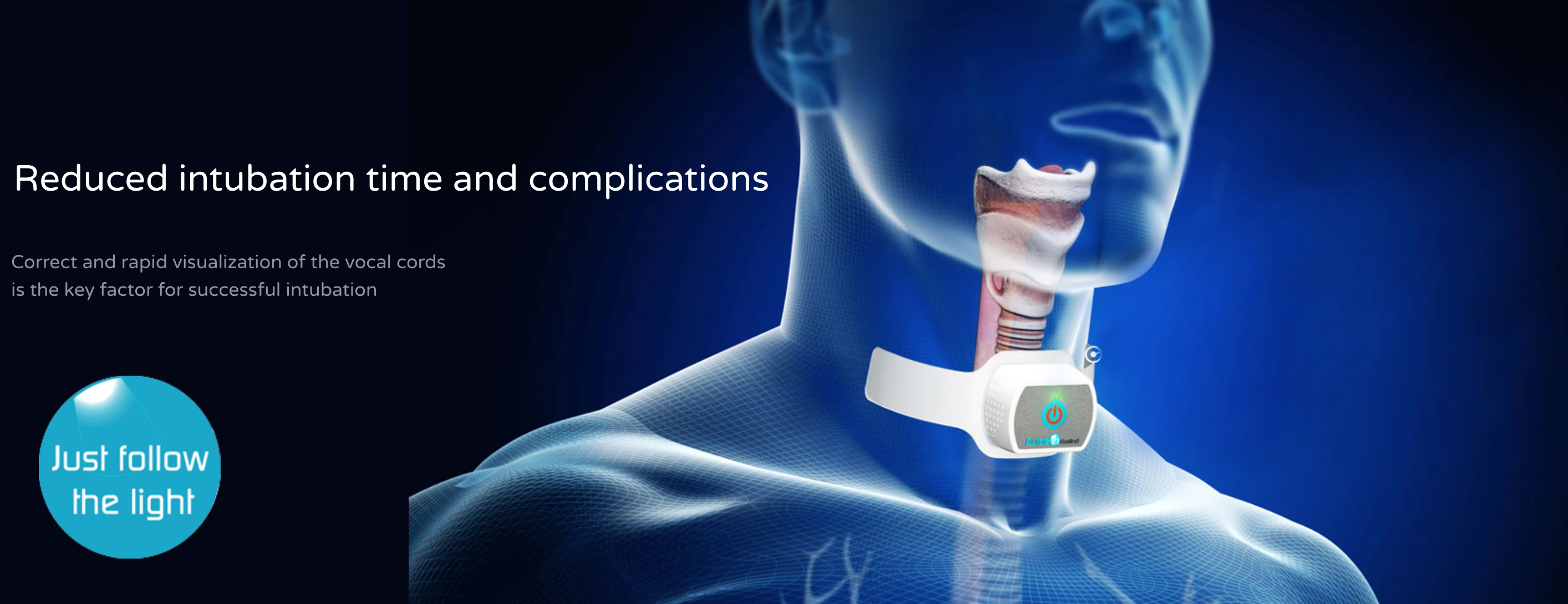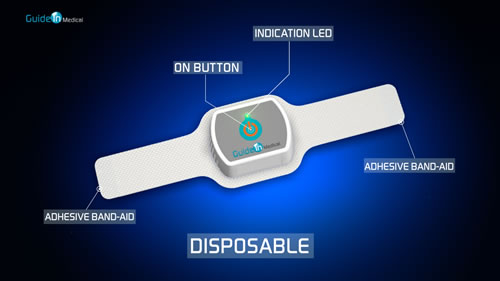IRRIS – Non-invasive Guided Endotracheal Intubation Device
Just Follow the Light…
Guide In Medical’s guided intubation device is based on an electronic illumination patch, which is placed on the patient’s neck.
Once activated, the device transmits light of a specific wavelength to the underlying tissues.The light is completely absorbed by the surrounding tissues, while a fraction of it is emitted solely by the trachea, thus enabling the clear identification of its position.
Video laryngoscopes, which are capable of detecting the emitted light, are used to guide the insertion of the ETT into the trachea.
The Guide In device is disposable and is uniquely capable of transforming ordinary video intubation devices into guided devices, thus facilitating intubation even in the most difficult clinical scenarios.
The Need
Endotracheal intubation is the placement of an endotracheal tube (ETT) into the trachea of patients who need artificial ventilation to maintain a constant supply of oxygen to the lungs.
The core challenge in endotracheal intubation is having the ability to correctly and precisely identify and visualize the location of the vocal cords, which mark the point of entry to the trachea, and to avoid misplacement of the ETT within the esophagus.
In cases in which visualization is limited or otherwise impaired due to anatomical malformations, secretions, blood, obesity or lack of expertise of the attending medical staff, the chances of such misplacement rise dramatically and can lead to severe clinical complications.
Tracheal injuries due to imprecise intubation are associated with a hospital stay prolonged by 1.1 days on average, and an added cost of $1888 per case. Readmission due to tracheal injury can last as long as 4.7 days on average, and resulting in an average cost of $11,025.




